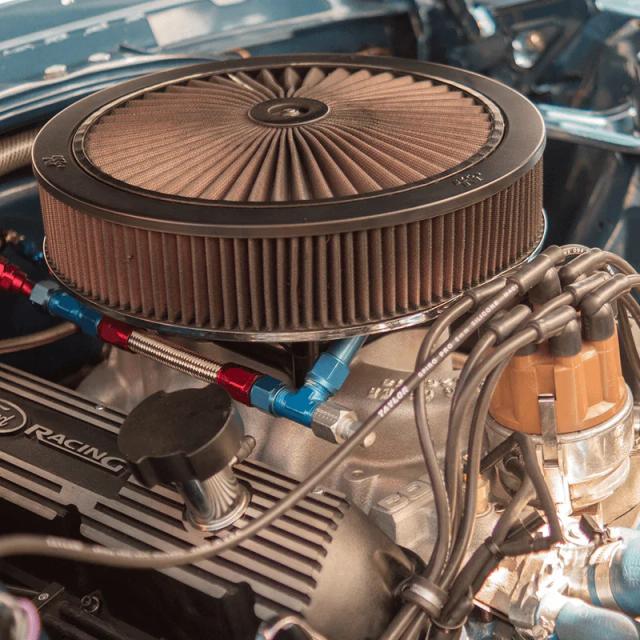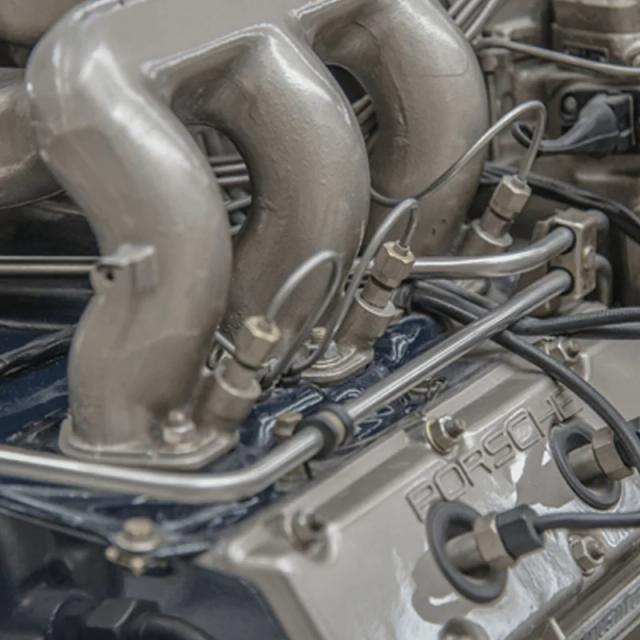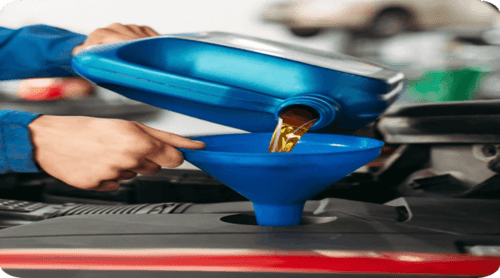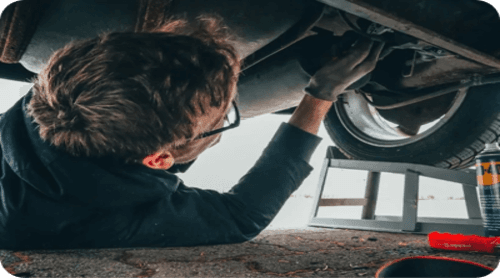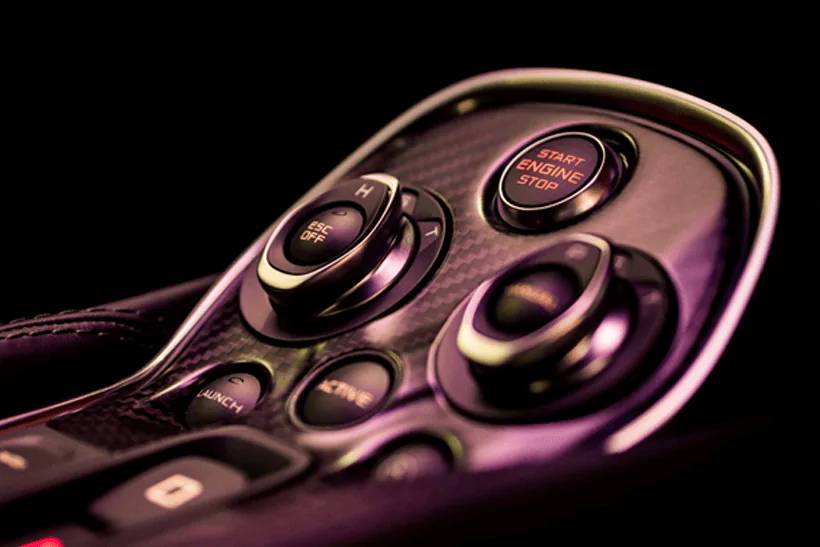
It's happened to almost all drivers at some point: you hop in the car, turn the key or hit the ignition button, and your car won’t start. For reasons unknown, your car won't start, and you're not going anywhere. What's more, you can hardly pop along to the nearest garage to get your vehicle repaired when you can't even get it off the driveway. It's undoubtedly a frustrating experience.
So, what's to be done? With a bit of mechanical know-how, it is possible to fix the problem yourself and get your car back out on the road. But first, you must diagnose why your car won't start.
In this guide to troubleshooting car starting problems, we'll share ten of the most common causes, along with some tips on how to identify and fix the issue:
Top 10 Reasons Your Car Won't Start
Flat Battery
Battery Terminals Are Dirty or Corroded
Starter Motor Is Faulty
Steering Lock Is Jammed
Power Cables Are Loose or Dodgy
Faulty or Worn Out Distributor
Ignition Coil Isn't Providing Enough Power
Spark Plug Problems
Run Out of Fuel
Fuel Filter Is Clogged
Car Starting Know-How
Top 10 Reasons Your Car Won't Start
Below are ten solid reasons your car might not be starting up:
1. Flat Battery
The most common cause of a car that won't start is a flat battery. The car battery stores the electrical energy needed to create a spark and ignite the engine. If there's not enough power in the battery, the car won't start. The most obvious sign your battery has died is if you can hear a clicking sound when you turn the key in the ignition, but the engine does not turn over.
All sorts of things can strain the battery, from a spell of freezing weather to leaving the car standing for a while. Or, you may have left one of your car's electrical consumers, like the lights, on overnight, which will gradually drain the battery. The battery might also be old; they need replacing every 3–4 years. You can buy a new battery for your vehicle here.
How to Fix It
Testing the battery using a voltmeter will tell you whether or not you have a flat battery on your hands. If so, you'll need to jump start it to get it going again. You can check our 'How To Jump Start a Car' guide to learn how to jump start your car. If jumping it still doesn't work, you may need to replace the battery completely. You can read about this in our 'Complete Car Battery Guide'.
Sometimes, battery issues are caused by a bad alternator. This part acts like a generator, providing the electrical energy needed to keep your engine and all of your vehicle's electrical systems ticking. Some of this electrical power is stored in the battery, which provides the burst of energy needed to create a spark and ignite the engine when you turn the key in the ignition.
If the alternator is faulty, the battery may not charge properly, meaning the car won't be able to start. You can resolve this issue by testing and changing the alternator. You can find out how to, with our ‘Complete Car Alternator Guide’ and find the correct alternator and alternator parts for your vehicle by clicking here.
2. Battery Terminals Are Dirty or Corroded
Car battery terminals (where the cable meets the battery) are frequently exposed to acidic fumes from the battery acid, meaning that they often become corroded over time. Signs of corrosion include a light white or blue powdery build-up around the battery terminals and along the cable. If left untreated for long enough, the connection to the cables will be compromised, and the car may fail to start. So, if your car won't start, you'll want to check the battery terminals for signs of corrosion.
How to Fix It
You can resolve this issue by cleaning the battery terminals using a specialist battery-cleaning product or bicarbonate of soda solution, which will work to neutralise any acidic corrosion. If the terminals have become severely corroded, you may need to change the battery completely.
3. Starter Motor Is Faulty
The starter motor gets the engine going by transmitting power from the battery to the engine. When there's a problem with this part, it means your engine isn't getting the electrical power it needs to ignite.
If you hear a single, loud click when you turn the ignition, it's a sign that there may be a fault with the starter motor or starter relay. You may also find that other electrical consumers in the vehicle, like the internal lights or dashboard, still work – it's just the engine won’t start.
How to Fix It
A professional can diagnose a starter motor issues for you. If you have some mechanical expertise, you can test the functionality of the starter using your car owner's manual and a voltmeter. If there's a problem, you'll need to get the starter motor repaired or replaced.
Jump starting the battery might also help fix the starter motor issues, but this is generally only a temporary fix – you'll probably encounter the same problem the next time you attempt to start the car. But it can help you get your car going to take it to your nearest garage for repairs.
4. Steering Lock Is Jammed
The steering lock may be jammed if your car won't start because you can't turn the ignition key. Most modern cars have a security function that automatically locks the wheel to prevent anyone from moving the car when the key isn't in the ignition. Sometimes, the driver can trigger this lock accidentally if the steering wheel is moved slightly after the ignition is switched off.
How to Fix It
If the key is stuck fast in the ignition and won't move, try turning the steering wheel slightly from side to side and gently twisting the key simultaneously. This should unlock the steering and ignition and get you going.
Sometimes, the wheel might get jammed and prevent you from moving it, perhaps because you're parked against a kerb. You can fix this by carefully releasing the handbrake, allowing the car to roll a little away from the kerb – keep your foot pressed down on the brake pedal to ensure you remain fully in control when doing this. This should free up the wheels, allowing you to turn the steering wheel slightly, as described above.
5. Power Cables Are Loose or Dodgy
The battery cables transmit electrical energy to the engine and other electric systems. Faulty, loose, or dirty battery cables can compromise the connection between the battery and the engine, meaning there's not enough energy to start the car. If the cables are damaged, you may notice slow engine cranking or clicking sounds during cranking.
How to Fix It
The best way to diagnose the problem is to visually inspect your cables for damage, fraying, or cracks. If you notice any problems at all, you'll want to replace them as soon as possible – new cables aren't costly, but they can really help to extend the life of your battery, so it's well worth doing. In cases where the damage is extensive, the cables and the clamps will need replacing.
6. Faulty or Worn Out Distributor
The distributor, distributor cap, and rotor arm are essential parts of your car's ignition system. They're responsible for passing voltage from the ignition coils to the engine cylinders to create a spark at just the right time to ignite the fuel in the engine. If the distributor develops a fault or isn't secured tightly enough, the engine won't be able to transmit the spark through the entire circuit to move the cylinders, meaning the car won't start.
The distributor cap can be especially vulnerable to dampness and moisture. If you have a problem starting after a spell of rain, it could be this causing the problem.
How to Fix It
First, inspect the cap and rotor arm to determine whether they've developed a fault. The internal and external surfaces should be clean, with no corrosion or rust on the surface or firing points. The rotor, in particular, needs to be pristine, as this is where the spark moves from one terminal to another. Check it carefully for any burn marks or blackened areas. You should also check that both parts are fitted securely.
If you notice any signs of wear and tear or carbon build-up, you'll need to replace the distributor cap and rotor arm.
7. Ignition Coil Isn't Providing Enough Power
The ignition coil is a crucial part of your car's ignition system. It converts the 12-volt charge from the battery into the much more powerful voltage needed to arc across the spark plug gap, creating a spark that ignites the fuel and air mix inside the engine and starts the car.
Some older cars only have one ignition coil, but most modern makes and models have a coil for every engine cylinder. As the ignition coil plays an important role in the ignition system, a faulty or damaged coil can cause several engine problems, like misfiring, stalling, or even a complete failure to start.
How to Fix It
First, you'll want to establish whether or not this part is causing the problem by testing your ignition coil. Once an ignition coil has developed a fault, it can't be repaired, so you'll need to fully replace it. Should you need to do this, we recommend fitting new spark plugs simultaneously to help the new ignition coil last longer.
8. Spark Plug Problems
Spark plugs are the parts of the ignition system that transmit an electrical charge from the ignition coil at precisely the right time to create a spark. This spark ignites the air and fuel mixture in the combustion chamber, firing up the engine and powering the vehicle.
Every car needs a clean set of spark plugs positioned at exactly the correct distance to burn fuel efficiently. When the spark plugs become misaligned, damaged, or dirty, the spark won't fire at the right time, leading to starting problems.
How to Fix It
You can test the spark plugs to determine if they function as they should. If they look dirty, you can also try cleaning them and re-adjusting the width to prolong their lifespan.
If cleaning them doesn't solve the issue, or you suspect a more severe problem, you can try fitting new spark plugs. Replacing them every few years will ensure the best possible fuel efficiency for your vehicle, so it's well worth doing this if it's been a while since you last replaced them. You can find the recommended replacement intervals in your car owner's manual.
9. Run Out of Fuel
If you don't have enough fuel in your tank, you won't be going anywhere! While it's an easy enough mistake to make, you never want to allow your car to run out of fuel, as this will force the engine to draw in more air, which can cause severe damage.
If you suspect the fuel level may have dropped drastically since you last parked, it could be a sign that the fuel tank indicator is faulty or that you've sprung a leak somewhere. If this is the case, you may see smoke coming from your car exhaust, which could be several different colours depending on the exact problem. You can check our 'Car Exhaust Smoke Guide' to help you determine what your exhaust smoke colour means. The problem could also be caused by a clogged fuel filter cutting off the fuel supply to the engine. You'll want to get this checked out as soon as possible.
How to Fix It
Fortunately, this one is easy to fix – all you need to do is find more fuel. So, take a plastic emergency fuel container (it's always best to store one of these in your boot) and head to the nearest petrol station. Remember that you should always ask an attendant for help filling up a container, as it can be a bit messier than filling up your car's tank.
10. Fuel Filter Is Clogged
Another common culprit behind a broken-down car is a clogged fuel filter. The engine needs a perfectly balanced mix of clean fuel and air for your vehicle to run smoothly. The function of the fuel filter is to stop contaminants, dust, and debris from compromising the fuel supply and getting inside the engine, which can cause serious damage. When the filter becomes too clogged up, it can disrupt the supply of petrol or diesel to the engine, meaning there won't be enough fuel to ignite and start your car.
How to Fix It
It's not always easy to tell if a dirty fuel filter is causing the starting problem, as the symptoms will often be the same as an empty fuel tank. Filters generally need to be changed once every 15,000–20,000 miles, depending on the make and model, so if it's been a while since you last changed the fuel filter, this could be causing the issue.
Replacement fuel filters are inexpensive, so it's well worth trying this to help fix the problem. If you have some mechanical know-how, you could always try fixing the problem by changing the fuel filter at home. You can follow our ‘Fuel Filter Guide’ on how to do this.
Car Starting Know-How
Once you've worked out why your car won't start, you can work on getting the problem fixed. It's worth bearing in mind that while this guide includes some of the most common reasons why a car won't start, there may be any number of other issues at play, and this isn't an exhaustive list. So, if you still need help working out what's causing the problem, consult a professional mechanic.
If you prefer to carry out the work at home to help keep the cost of repairs down, remember you can find everything you need to get your car on the road again at GSF Car Parts. We have a vast array of car service parts and car batteries to suit all makes and models – enter the details of your vehicle in our product finder to see exactly the correct components for your car. You can also find more handy guides in our auto knowledge hub.
Shop Car Parts and Spares at GSF Car Parts Online and In-Store
All our car parts and spares are from trusted brands in the motoring industry, so you can count on them to be reliable and of excellent quality. Plus, our low-price promise means you can always expect great value, too.
We offer free UK delivery on all online orders over £25, plus 60-day returns*. We also know you want to get your car up and running as soon as possible, which is why we offer a Click and Collect service that allows you to get your new car part or spare in just an hour.
So, buy car parts and spares from us with confidence today. Or if you're close to one of our 180 store locations across the UK & Ireland, drop by. Our experienced staff will be able to direct you to the correct part for your vehicle.

